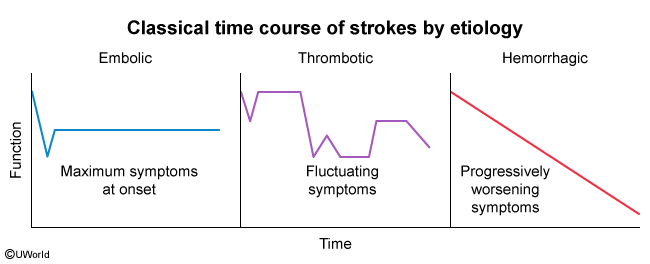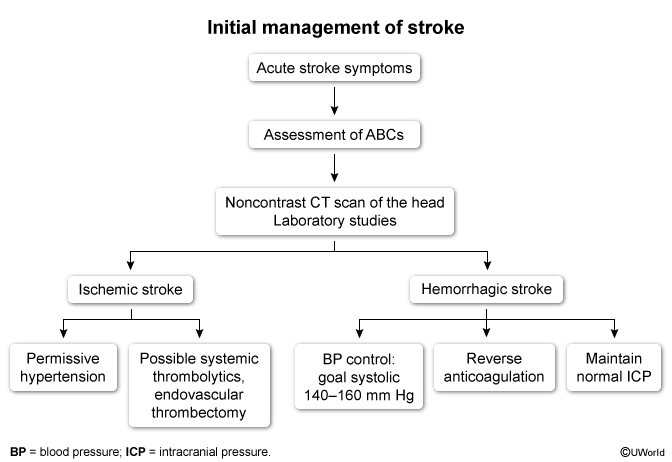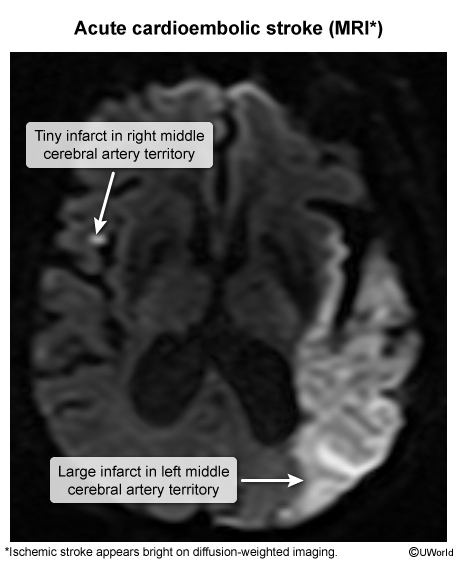Stroke
Article Sections
- Introduction
- Pathogenesis
- Risk factors
- Clinical presentation
- Diagnostic evaluation
- Neuroimaging
- Management
- Management of ischemic stroke
- Management of hemorrhagic stroke
- Supportive care
- Rehabilitation
- Special considerations: cryptogenic stroke
- Special considerations: transient ischemic attack (TIA)
- Special considerations: pediatric strokes
- Summary
Introduction
Stroke, or cerebrovascular accident, describes an acute neurologic event that occurs due to either brain ischemia (ischemic stroke) or intracranial hemorrhage (hemorrhagic stroke). Prompt recognition and management can help minimize brain tissue damage and optimize patient outcomes. This article provides an overview of stroke evaluation and management. Specific neuroanatomic localization features are described in a separate article.
Pathogenesis
The initial evaluation of stroke is based on differentiating between the 2 main categories of stroke, ischemic stroke and hemorrhagic stroke.
Ischemic strokeIschemic stroke (~85%) arises from a blockage within a cerebral artery, typically caused by a thrombus (blood clot) or embolus (dislodged material). Atherosclerosis, the buildup of plaque within the arterial walls, is a strong risk factor. Histopathological examination reveals cellular swelling, pyknosis (nuclear shrinkage), and karyolysis (dissolution of the nucleus) with disappearance of the basophilic Nissl bodies (leading to deeply eosinophilic staining red neurons) in affected neurons within the infarct core (
Continue Learning with UWorld
Get the full Stroke article plus rich visuals, real-world cases, and in-depth insights from medical experts, all available through the UWorld Medical Library.
Figures


Images
